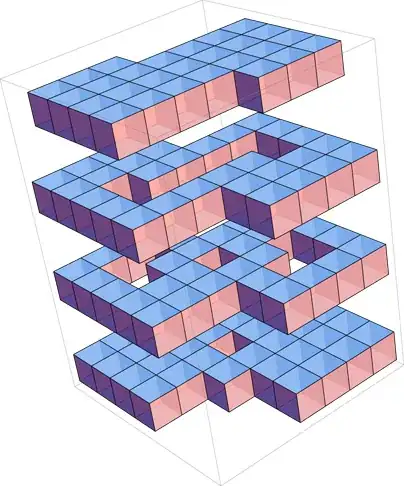Janos Pach asked a deep question 23 years ago (1988) that remains unsolved today:
Can every animal—a topological ball in $\mathbb{R^3}$ composed of unit cubes glued face-to-face—be reduced to a single unit cube by adding and deleting cubes, while always maintaining the animal (ball) property?
("Animal" was an apparently original coinage of Janos's.)
I and my students quickly found irreducible animals, i.e. balls of unit cubes from which no cube can be removed without destroying the topological-ball property.
Here is one of 119 cubes due to Tom Shermer (which I exploded vertically for visualization):

Essentially all our irreducible examples are based on Bing's House with Two Rooms (unbeknownst to us at the time).
So if Pach's question has a positive answer, it requires adding cubes as well as deleting.
This history is recounted in Günter Ziegler's Lectures on Polytopes, Springer, 1995, p.276.
His non-shellability Theorem 8.15 (p.243) is based on these irreducible animals.
So, I finally come to my question, which is essentially a question of shellability:
Can every (embedded) object constructed by gluing unit cubes face-to-face, regardless of genus, be reduced to a single unit cube by adding and deleting cubes, while always maintaining that the surface is a 2-manifold?
This is exactly Pach's question, but with the ball-requirement removed. All the irreducible animals I know rely on violating the topological-ball requirement for their irreducibility; so it is (remotely) possible that reduction alone suffices(!). I am tempted to introduce a new genera to encompass Plantae & Animalia; but I resist.
Any pointers that may lead me to information on the generalization of Pach's question would be greatly appreciated. Thanks!
Addendum, 11 May 2011 (original posting on 2 January 2011). The problem is now solved (positively): Every animal can be reduced by adding and deleting cubes. The proof is contained in two papers, the second of which appeared as a tech report in May 2010: "A solution to the animal problem," by Akira Nakamura. Here is the PDF. The first paper, an earlier 2006 tech report, is called simply, "B-Problem," by Akira Nakamura, Kenichi Morita, and Katsunobu Imai. Here is its PDF. I would summarize but I do not yet understand the papers, which are presented in terms of "digital topology."
Is much known about other cell divisions, for instance the tiling by associated with the tetrahedral reflection group where the tetrahedron has two opposite 90 degree angles and all other angles 60 degrees?
– Bill Thurston Jan 03 '11 at 16:53